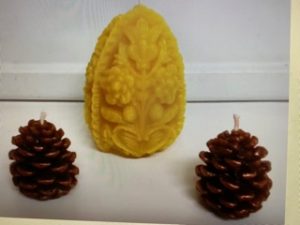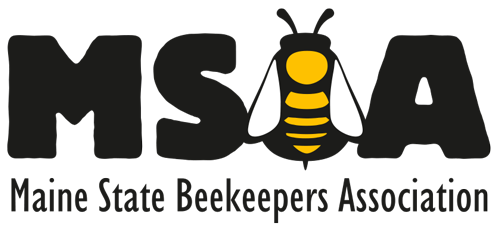
Carol Cottrill, Master Beekeeper and newly retired Secretary of EAS, spoke at the December 14, 2020 meeting on preparing and making products from beeswax.
Prior to this meeting Carol supplied a PDF of her product recipes with a list of suppliers of oils and packaging. These recipes look easy to do. I hope you all will give it a try.
Some properties of beeswax are 1) it is insoluble in water and having a density of 0.95, floats; 2) it has a low melting point (144°) and will begin to discolor at 185°; 3) has a flash point of 400°; and 4) has a stable chemical makeup which doesn’t oxidize and is not affected by mildew.
Beeswax can be collected in the bee yard, from old frames and from cappings.
Since beeswax is highly flammable a fire extinguisher (and knowing how to use it) should be nearby. A table-top electric burner is a way to melt beeswax and can be used outside the kitchen. Using a gas stove is NOT advised. Carol suggests using metal coffee cans or cheap/old pans to melt the beeswax in.
There are a number of ways to clean beeswax from solar wax melter to water process method to burlap bag method. The cleaned beeswax can be heated up and filtered through panty hose or nylon netting to remove the finest bits of debris.
The cleanest, purest beeswax would be used for making cosmetics, while less pure beeswax would be used for candle making and the bottom of the pot beeswax for fire starters.
Carol also mentioned a Facebook group “Pure Beeswax Candle Making”. It is a closed group and you will need to request admittance/membership.

